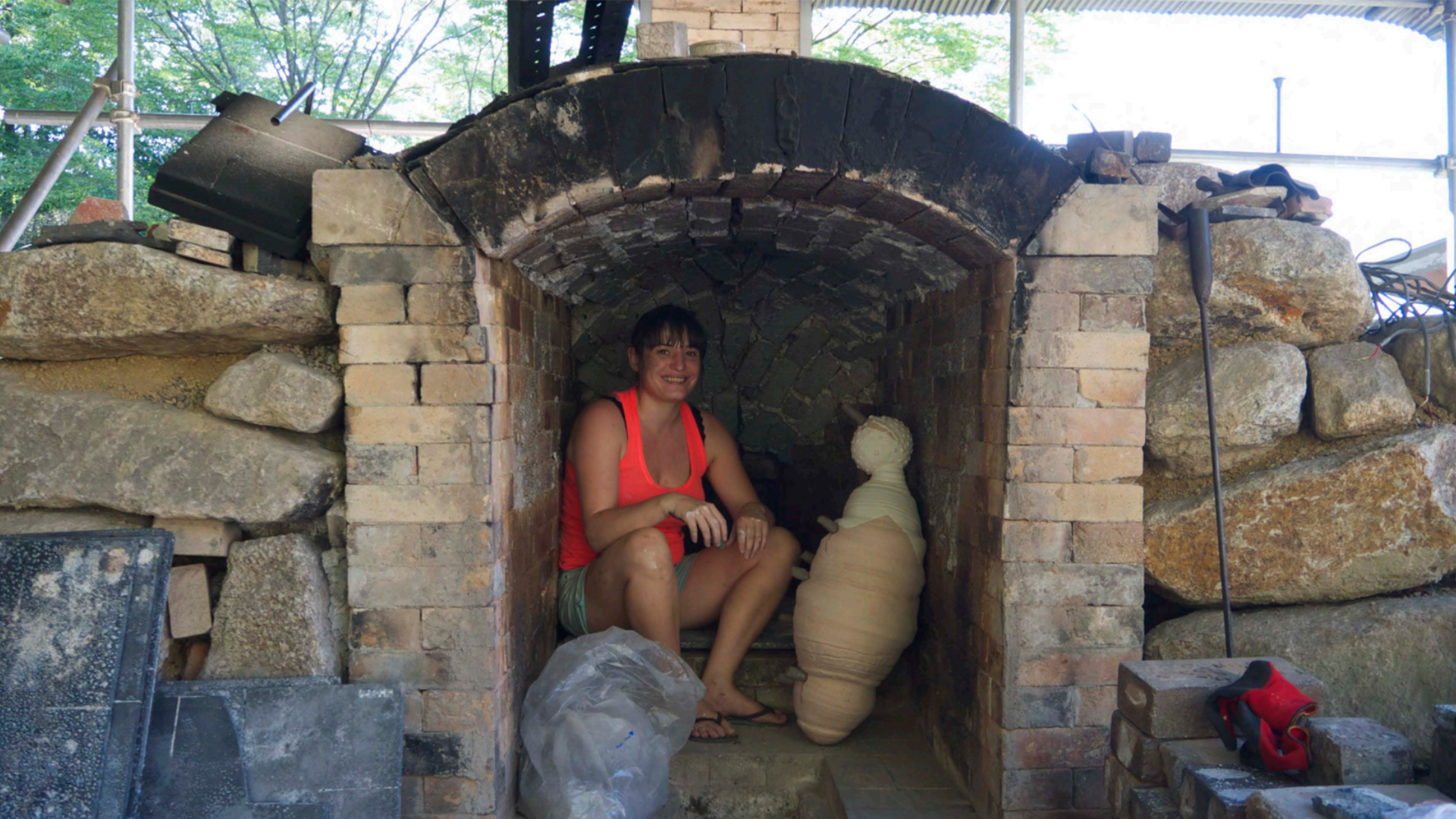


Alice Aucuit, through the use of clay, raises questions about the function and status of the object, about the shifting border between contemporary art and crafts, about the handmade and the series. She juggles between a colorful and offbeat utilitarian production under the name “O' grés d'Alice” and artistic creations that take the form of installation, sculpture or performance. Alice defends the possibility of combining contemporary artistic approach and traditional know-how.
The ceramist deals in various forms with the relationship between daily events, current events and collective or personal memory, the relationship between Man, culture and the object. She often confronts images from the past, objects or ancient texts with contemporary situations and modern figures. This often translates into an iconographic syncretism or the notions of accumulation, repetition, hybridity, anachronisms, parody, are recurrent in her work. A text or a play on words can become the starting point for artistic research just like a historical fact, a place or a news story that she often puts in parallel, mixing the sacred and the ordinary, the popular and the precious, the public and the intimate, with humor and sensitivity. 'Alice Aucuit was not born in Wonderland, far from it, she does not believe in fairy tales, she searches the folds of history to find those who have been forgotten and to make them emerge, from stoneware or earthenware. She carries within her 'this poetry [...] this atmosphere of dream and magic which, for some imaginations, emerges quite naturally from the very spectacle of reality'(Edmond Jaloux).
A ceramicist, she covers herself in clay in performance (Two clay, 2010), exhibits the bone in its magnificent form ('L'os comme essence de l'Homme', 2011), climbs the tree of life and plants a slogan there: 'no future' ('Tree life', 2013), and heals the wounds of the urban struggles of the past with her doves of peace ('Des colombes pour la Commune', Histoire(s) de rues 2011).
With her insatiable energy and boundless curiosity, Alice Aucuit reinterprets the art of ceramics to - beyond its primary role of providing a container or decorating a surface - highlight the content and make the walls speak. The flame that burns and transforms becomes her ally to reveal the alchemy of man, his historical follies as well as his porcelain joys.
But the artist is above all a woman and, as such, bearer of the future and heir to the secret memory whispered by word of mouth since the first guardians of the home. When she hangs her diverted Barbies on the trees (“Des fruits étranges à Plainpalais”, Histoire(s) de rues 2011”), she is in solidarity with the victims of patriarchy and the rigidities of monotheisms. For them, Alice Aucuit makes glass amulets with enameled souls.
I met the bubbly Alice in Saint-Pierre in the south of Reunion Island in 2011, and over the course of a month, or rather ten hours of interviews, she enthusiastically told me about the adventures that her age-old art took her on: from the prestigious school of Vevey in Switzerland to the potters of China. Little by little, the abundant collection of her practices, the joyful chaos of forms and unexpected associations took coherence to reveal a committed work, full of humor and seriousness.